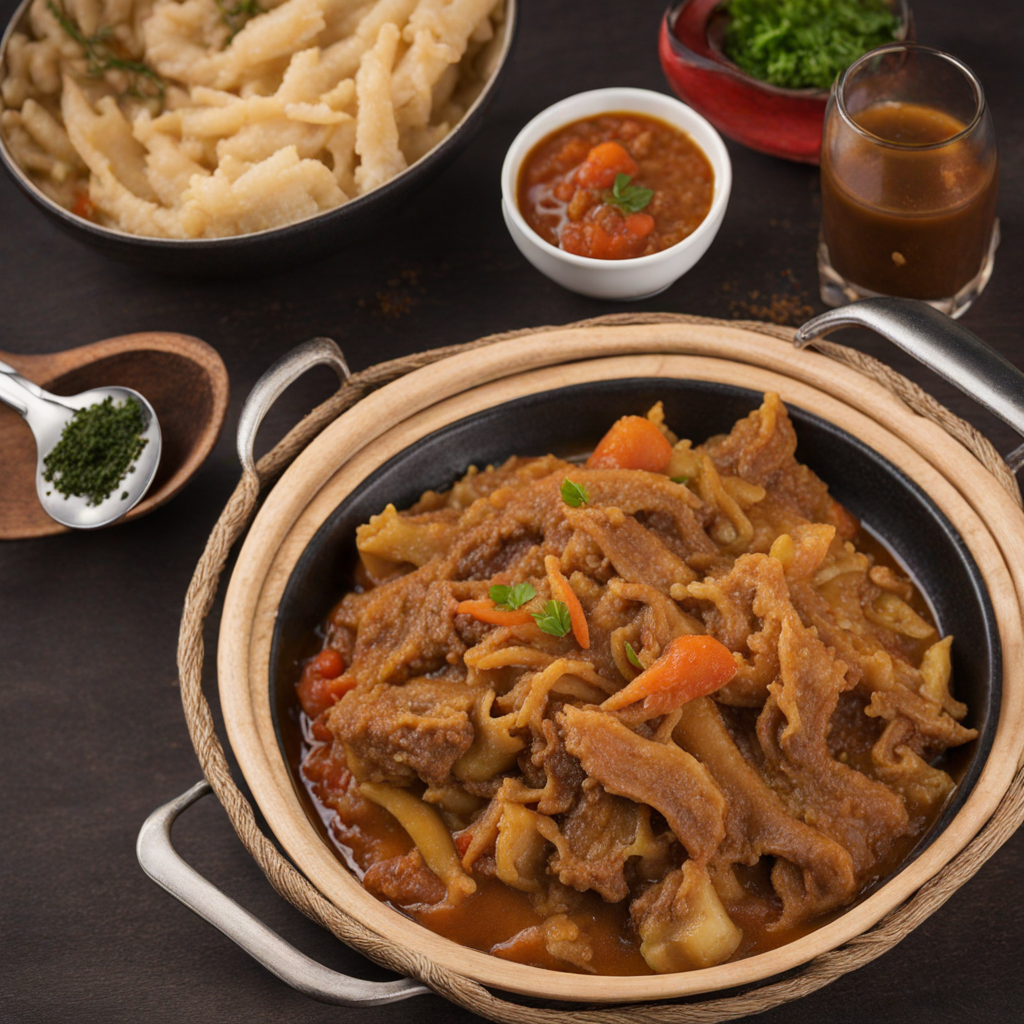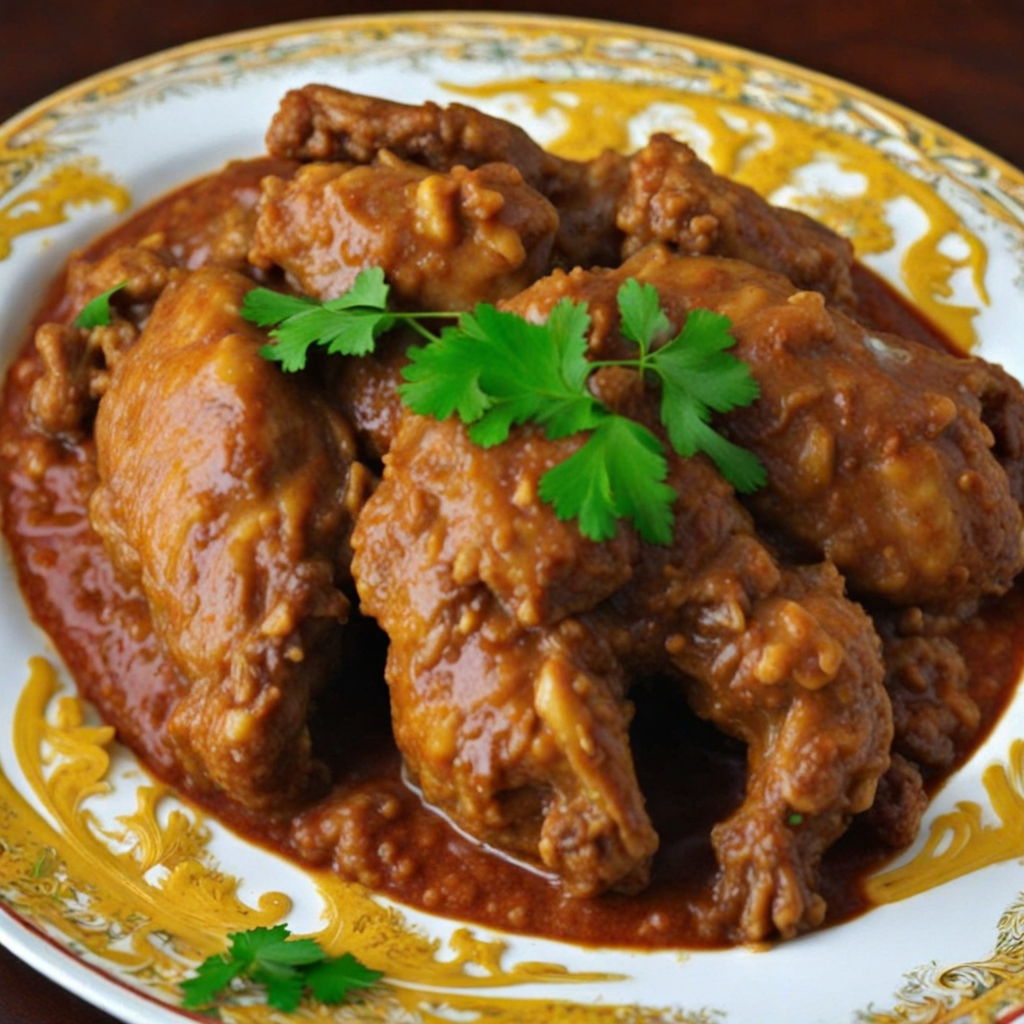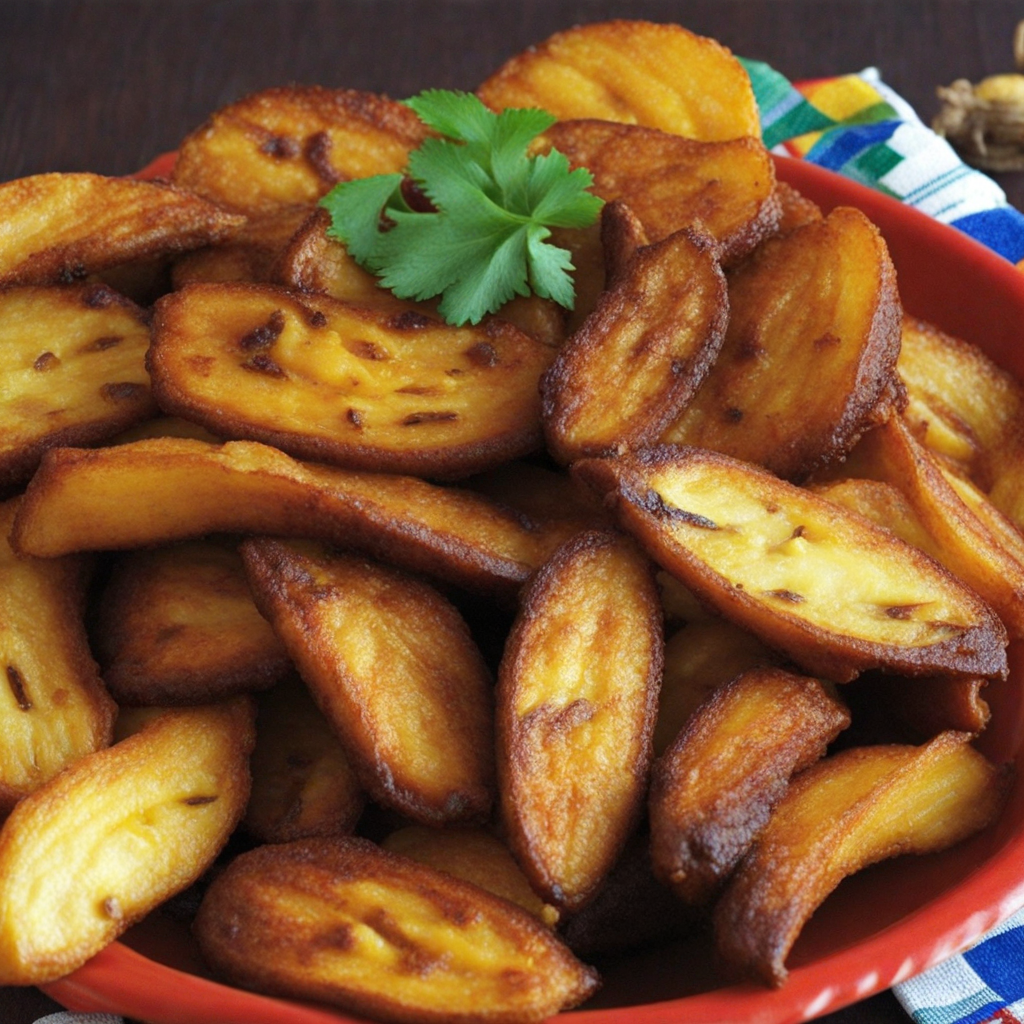Bitumbu
Bitumbu is a traditional dish from the Congo, celebrated for its vibrant flavors and rich cultural significance. At its core, Bitumbu is made from cassava leaves, expertly cooked to create a luscious green base that is both nutritious and flavorful. The leaves are often ground and mixed with ingredients like groundnut (peanut) paste, palm oil, and spices, resulting in a dish that is both creamy and aromatic. The combination of these elements creates a delightful balance of earthy, nutty, and slightly sweet flavors that truly represent the essence of Congolese cuisine. What sets Bitumbu apart is its versatility; it can be served as a standalone dish or paired with a variety of accompaniments. Often, it is enjoyed with starchy staples like fufu (a dough-like food made from cooked cassava or plantains) or rice, which helps to soak up the rich sauce. The dish is not only a feast for the palate but also a feast for the eyes, as the deep green color of the cassava leaves contrasts beautifully with the warm tones of the peanut sauce, inviting diners to indulge in its wholesome goodness. Bitumbu is more than just a meal; it is a celebration of communal dining and cultural heritage. Families often come together to prepare this dish, passing down recipes and techniques through generations. Sharing Bitumbu during gatherings or special occasions highlights the importance of togetherness and tradition in Congolese society. For those looking to discover new tastes, Bitumbu offers an authentic glimpse into the culinary heart of the Congo, promising a unique experience that delights the senses and nourishes the soul.
How It Became This Dish
Bitumbu: A Culinary Heritage of the Congo Origins of Bitumbu Bitumbu, often referred to as African eggplant or garden egg, is a staple dish found predominantly in the Democratic Republic of the Congo (DRC) and its neighboring regions. The name “bitumbu” is derived from the Lingala language, which is widely spoken in the DRC. This dish, while simple in its composition, is rich in history and cultural significance, stemming from the agricultural practices and culinary traditions of the Congolese people. The origins of bitumbu can be traced back to the early agricultural civilizations of Central Africa, where indigenous communities cultivated a variety of vegetables and grains. The eggplant, known scientifically as Solanum melongena, is believed to have originated in South Asia, but it adapted well to the African climate and was integrated into local diets. Over centuries, it evolved into several varieties, including the smaller, rounder types favored in Congolese cuisine. Cultural Significance Bitumbu is more than just a dish; it is intertwined with the social and cultural fabric of the Congolese people. Traditionally, bitumbu is prepared using fresh garden eggs, which are often harvested from family gardens. This practice reflects the deep-rooted connection the Congolese have with their land and the importance of subsistence farming in their daily lives. In Congolese culture, food plays a central role in community gatherings, celebrations, and rituals. Bitumbu is often served during festive occasions, family gatherings, and communal feasts, symbolizing hospitality and togetherness. The preparation of bitumbu is usually a communal effort, with family members coming together to wash, cut, and cook the eggplants, fostering a sense of unity and cooperation. Moreover, bitumbu is often accompanied by a variety of sauces and side dishes, such as groundnut sauce, which not only enhances its flavor but also adds nutritional value. This practice of combining dishes reflects the Congolese culinary philosophy of using local ingredients to create balanced meals that cater to the tastes and health needs of the community. Development Over Time As the DRC has undergone significant social and economic changes throughout its history, so too has the preparation and consumption of bitumbu. During the colonial period, the introduction of foreign ingredients and cooking techniques began to influence traditional Congolese cuisine. While bitumbu remained a beloved dish, it adapted to incorporate new flavors and cooking methods, blending the old with the new. In the post-colonial era, the DRC faced challenges such as political instability and economic hardship, which impacted food security and agricultural practices. Despite these challenges, communities continued to cultivate traditional crops, including garden eggs, as a means of preserving their culinary heritage. Bitumbu became a symbol of resilience, representing the ability of the Congolese people to maintain their identity and traditions in the face of adversity. In recent years, there has been a renewed interest in traditional Congolese cuisine, as younger generations seek to reconnect with their roots and celebrate their cultural identity through food. Chefs and home cooks alike have begun to experiment with bitumbu, incorporating it into modern culinary contexts while respecting its traditional origins. Restaurants in urban areas are increasingly featuring bitumbu on their menus, often presented in innovative ways that appeal to both local and international palates. Additionally, the global movement toward sustainable and locally sourced ingredients has further elevated the status of bitumbu. As people become more aware of the environmental impacts of industrial agriculture, there is a growing appreciation for traditional farming methods and indigenous crops. Bitumbu, with its rich nutritional profile and adaptability to local conditions, is positioned as a symbol of sustainable eating and food sovereignty. A Taste of Bitumbu Today Today, bitumbu is enjoyed in various forms across the DRC and its neighboring countries. It can be prepared in a variety of ways: steamed, boiled, or fried, often served alongside fufu, a starchy staple made from cassava or plantains. The versatility of bitumbu makes it a beloved ingredient, allowing it to be incorporated into a wide array of dishes—ranging from stews to salads. One of the traditional ways to prepare bitumbu is to sauté it with onions, tomatoes, and spices, creating a flavorful dish that captures the essence of Congolese cooking. This method highlights the importance of communal cooking, as families gather around the stove to share stories and enjoy each other's company while preparing their meal. In addition to its savory applications, bitumbu can also be used in desserts and snacks. For example, it can be blended into smoothies or pureed into a sweet spread, showcasing its culinary flexibility. This adaptability has allowed bitumbu to transcend cultural boundaries, appealing to a broader audience beyond the Congolese diaspora. Conclusion Bitumbu is a dish that encapsulates the rich agricultural heritage and cultural significance of the Congolese people. Its origins are deeply rooted in the traditions of local farming and community cooking, while its development over time reflects the resilience and adaptability of the Congolese culture. As it continues to evolve in contemporary culinary contexts, bitumbu serves as a reminder of the importance of preserving culinary heritage and celebrating the diverse flavors of Africa. In a world increasingly focused on global cuisine, bitumbu stands out as a symbol of local identity, sustainability, and the enduring power of food to bring people together. Whether enjoyed at a festive gathering or as a comforting home-cooked meal, bitumbu remains a beloved dish that connects generations and embodies the spirit of the Congo.
You may like
Discover local flavors from Congo







